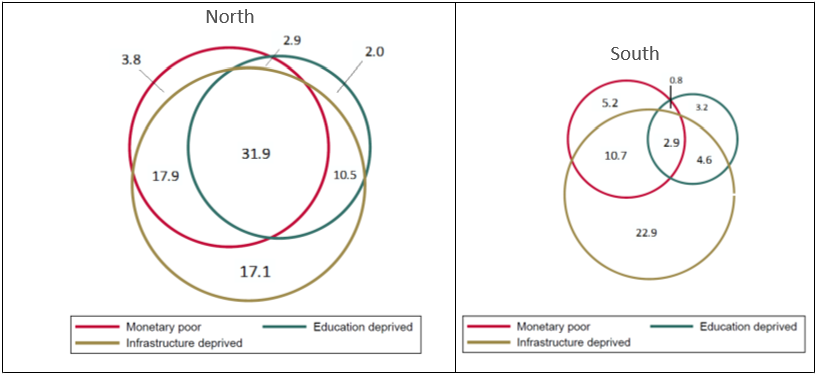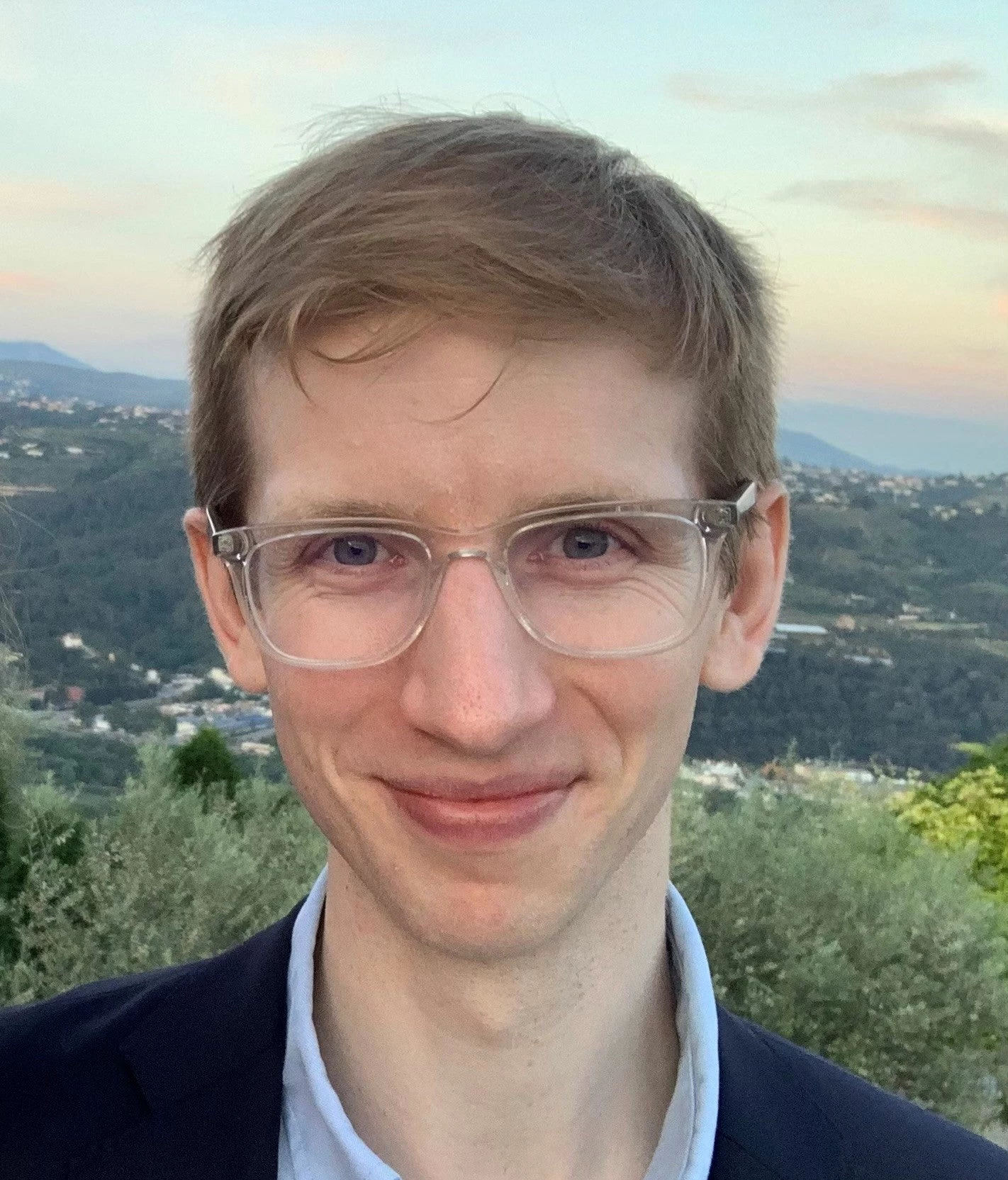Nigeria aspires to lift 100 million people out of poverty by 2030. Prior to the COVID-19 crisis, around 4 in 10 Nigerians were living in extreme poverty, based purely on a monetary measure.[1] Using the same population estimates as the 2018/19 Nigeria Living Standards Survey, this means that more than 80 million Nigerians were living in poverty before the pandemic, even without data from Borno state where the survey could not be fully carried out.[2] However, projections suggest that the combined effects of the COVID-19 crisis and natural population growth could leave 100 million people living below the national poverty line by 2022, rationalizing the government’s ambitious poverty reduction aspirations. Since Nigeria is home to the largest number of poor people in Sub-Saharan Africa—the world’s poorest region—lifting Nigerians out of poverty is vital for “moving the needle” and reducing global poverty.
It’s not just money
Yet poverty is increasingly being understood as a multidimensional phenomenon.[3] Even households who are not monetarily poor may still be unable to send their children to school or may have members who are malnourished. In participatory studies, poor people themselves say that non-monetary factors—including food security, housing, health, education, and security—matter directly for their wellbeing. Since not all of these factors can be accessed in the market, measuring monetary income or consumption alone may not be enough. Human capital, housing, and basic infrastructure are also key correlates of monetary poverty. Multidimensional poverty indicators, including the Global Multidimensional Poverty Index produced by the United Nations Development Programme and the Oxford Poverty and Human Development Initiative, have thus arisen; the World Bank has its own Multidimensional Poverty Measure (MPM) that captures dimensions of education and basic infrastructure alongside monetary poverty.
So, what picture of poverty does the multidimensional approach paint in Nigeria? According to the MPM, as many as 47.3% of Nigerians—some 98 million people—live in multidimensional poverty.[4] This is more than the entire population of the Democratic Republic of the Congo. As such, Nigeria is the largest contributor to multidimensional poverty in Sub-Saharan Africa, the region experiencing the highest levels of deprivations in multidimensional poverty. Meeting regional and global targets on non-monetary poverty—as well as monetary poverty—therefore hinges on Nigeria.
Within-country differences
Within Nigeria, the distribution of monetary and multidimensional poverty is spatially unequal, so poverty reduction strategies need to be carefully targeted. Both monetary and multidimensional poverty are largely concentrated in Nigeria’s northern states (Figure 1). Moreover, the north-south gap in terms of education and basic infrastructure does not appear to be closing substantially over time.
As is the case globally, multidimensional poverty significantly exceeds monetary poverty across Nigeria: about 16.0% of those who are multidimensionally poor in the north and 21.4% of those who are multidimensionally poor in the south are not classified as monetarily poor.
Figure 1. Both monetary and multidimensional poverty are concentrated in northern Nigeria

Setting policy priorities
Looking at the relationship between monetary and multidimensional poverty can tell us which policies to emphasize. Using simple regression techniques, monetary poverty appears to be most strongly associated with lack of access to electricity as well as deprivation in terms of educational enrolment and attainment. [5] For two Nigerians living in households with otherwise similar characteristics, the person without access to electricity would be around 23.8 percentage points more likely to be monetarily poor than those with access.[6] This suggests that electrification and policies to boost educational enrolment and attainment may be particularly important channels for reducing monetary poverty in Nigeria. Such analysis cannot be given a causal interpretation per se, but it may help to prioritize those policies which offer the largest “bang for the buck” in terms of poverty reduction.
Targeting overlaps in dimensions of poverty
Yet, since many households are deprived across multiple indicators, targeting poverty-reducing policies also relies on knowing how much different dimensions of poverty overlap: the extent of these overlaps varies substantially across Nigeria. When overlaps are small, different interventions—be they for education, infrastructure, or monetary consumption—need different targeting strategies. However, when overlaps are large, different interventions can target essentially the same households. Indeed, in some countries, conditional cash transfer policies—such as Prospera in Mexico or Bolsa Família in Brazil—explicitly try to address multiple dimensions of poverty for the same households at the same time. In Nigeria, the largest overlaps between monetary and non-monetary poverty arise in northern Nigeria (Figure 2), as well as in rural areas. This echoes the global finding that different dimensions of poverty overlap more in poorer regions, and especially in Sub-Saharan Africa.
Figure 2. The overlaps between different dimensions of poverty are larger in northern Nigeria

Source: NLSS 2018/19 and World Bank calculations.
Solving complex challenges
Nevertheless, even if we know which policies to prioritize and in which communities, conflict, climate shocks, and COVID-19 need to be carefully considered to successfully reduce poverty in Nigeria. Firstly, implementing interventions to reduce poverty is difficult when violence looms: this is especially challenging in the north east of Nigeria, although conflict events occur across all of Nigeria’s zones. Secondly, shocks could reverse hard-earned gains. Around one-quarter of Nigeria’s population is classified as “vulnerable”—having consumption levels between 1 and 1.5 times the national poverty line—but social protection is extremely rare. Indeed, around 1 in 5 Nigerians experienced a climate-related shock in the three years prior to 2018/19, so policies that seek to build resilience will also be vital. Thirdly, through its effects on health, jobs, and income, but also schooling and investment in basic infrastructure, COVID-19 threatens to deepen both monetary and non-monetary poverty in Nigeria, underlining the importance of having tailored, granular policies to respond to the crisis and build back better.
[1] In the 2018/19 Nigeria Living Standards Survey, 39.1% of Nigerians lived below the international poverty line of $1.90 per person per day (2011 PPP), while 40.1% of Nigerians lived below Nigeria’s national poverty line.
[2] The global and regional estimates of poverty provided by PovcalNet instead use population data taken from the World Development Indicators to facilitate cross-country comparisons.
[3] This line of thinking can be traced back to Sen’s capability approach, whereby poverty is a deprivation of capability or a “lack of multiple freedoms people value and have reason to value.”
[4] The absolute number of multidimensionally poor people is also calculated using the population weights from the 2018/19 Nigeria Living Standards Survey. This estimate excludes Borno.
[5] Specifically, we run a linear probability model of monetary poverty status on dummy variables capturing each of the non-monetary indicators included in the MPM, as well as controls for household demographics and employment characteristics.
[6] The coefficient on the electricity variable is larger than the coefficient on the other deprivations in both northern and south Nigeria.



Join the Conversation